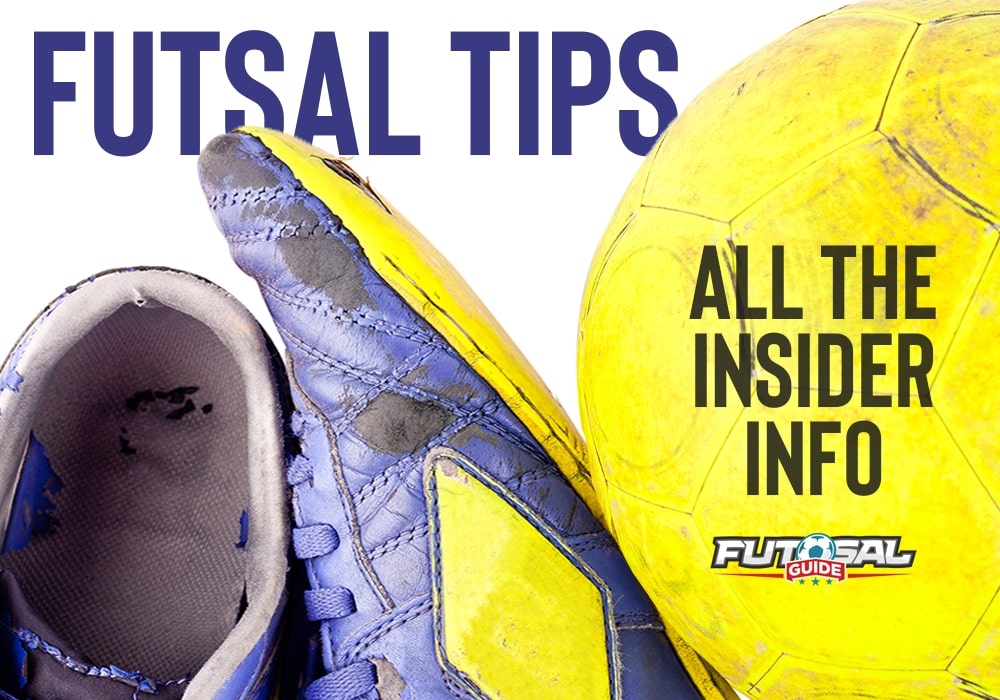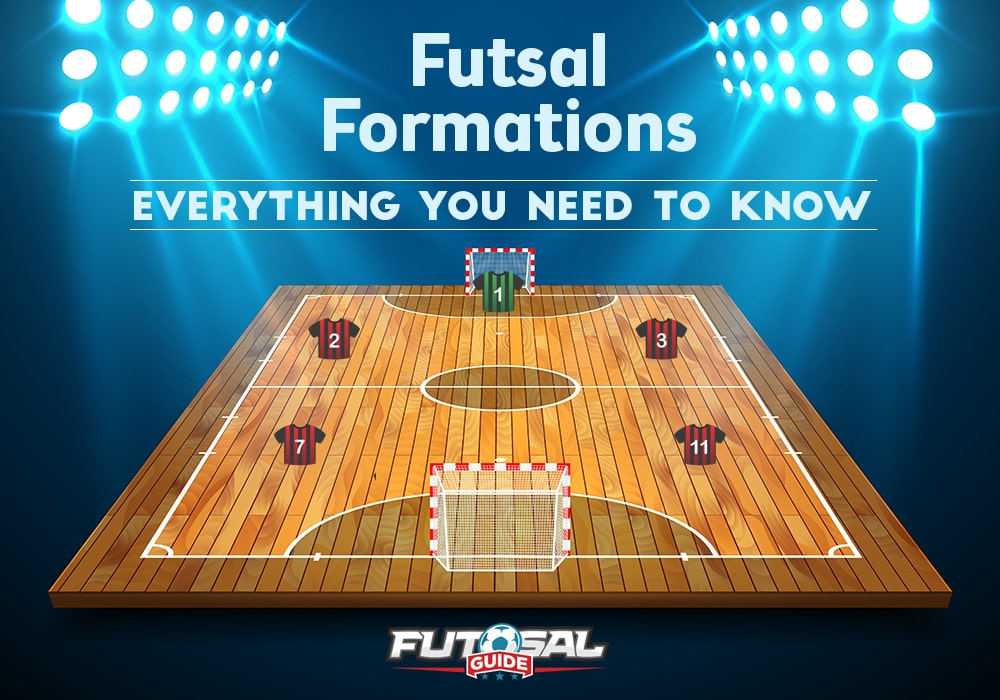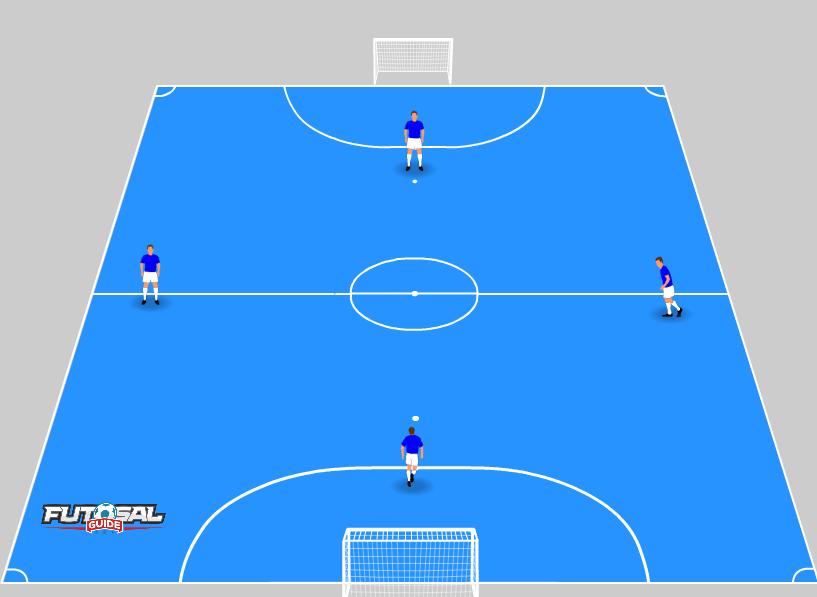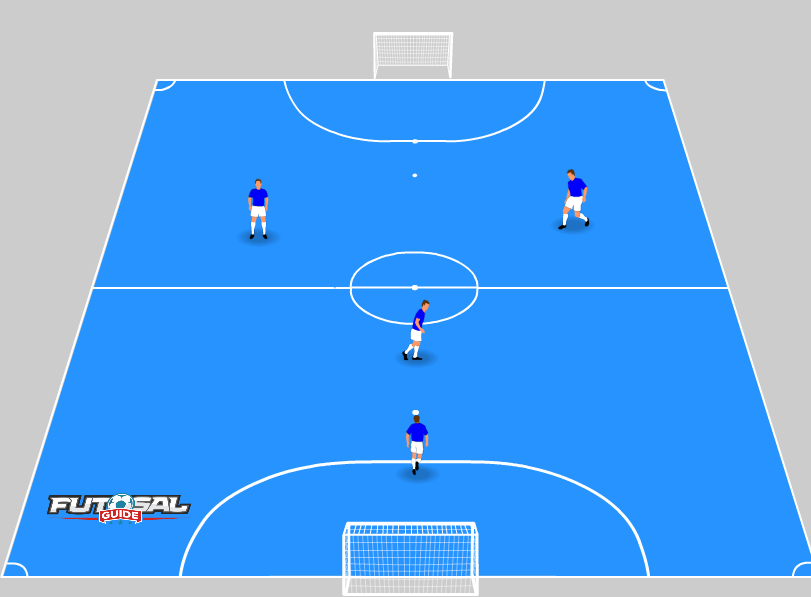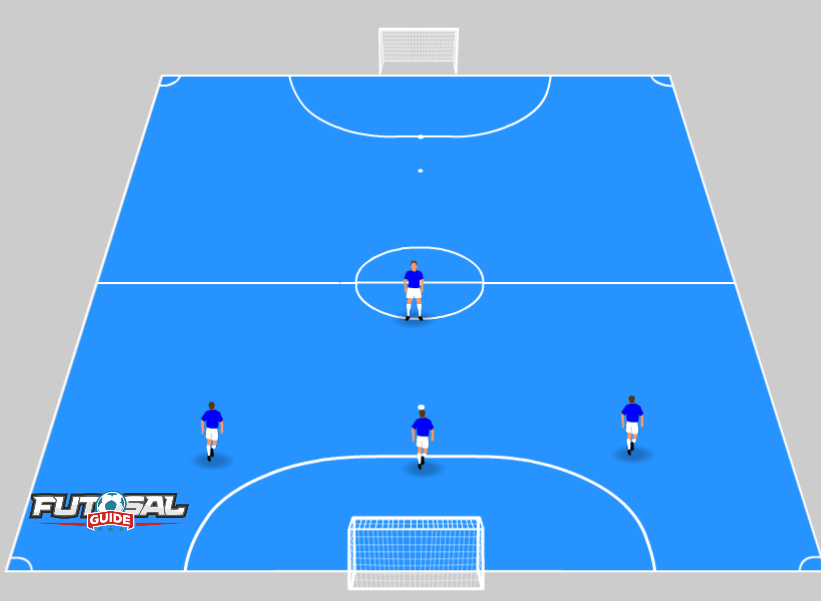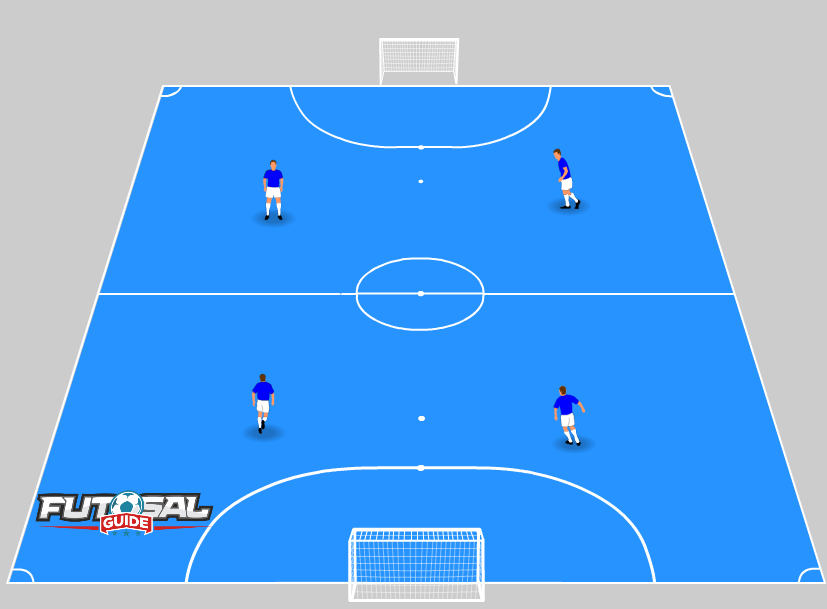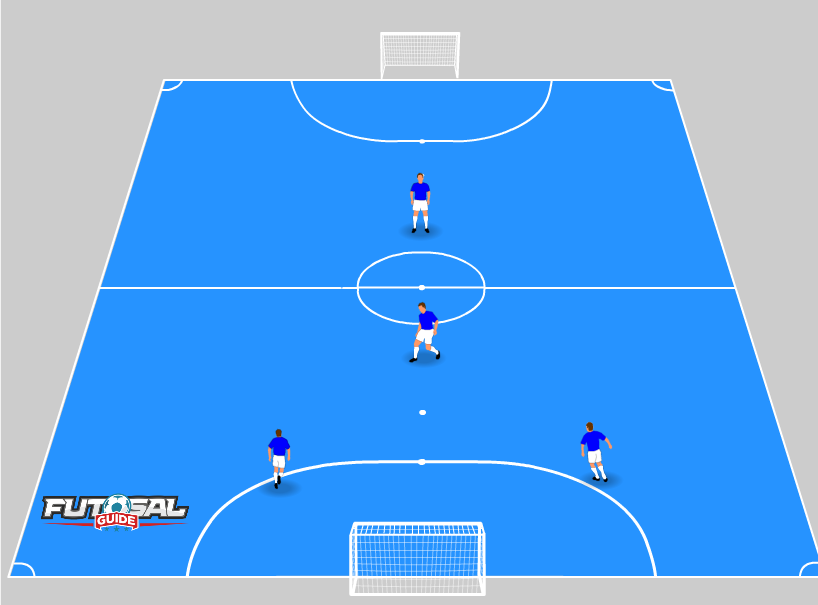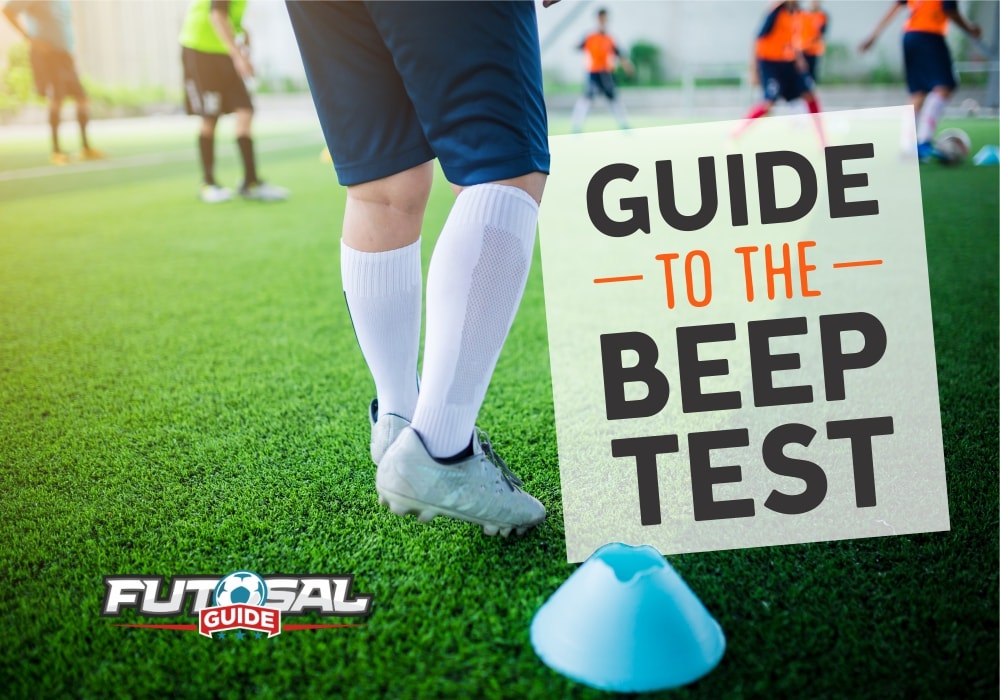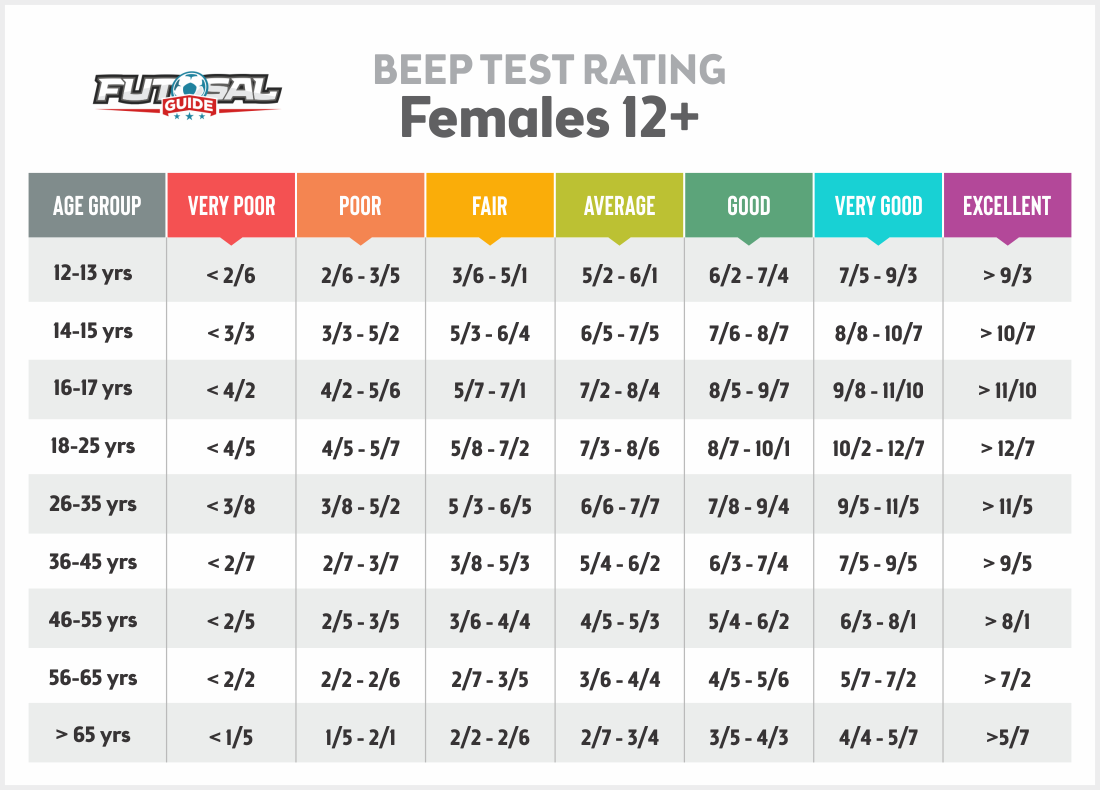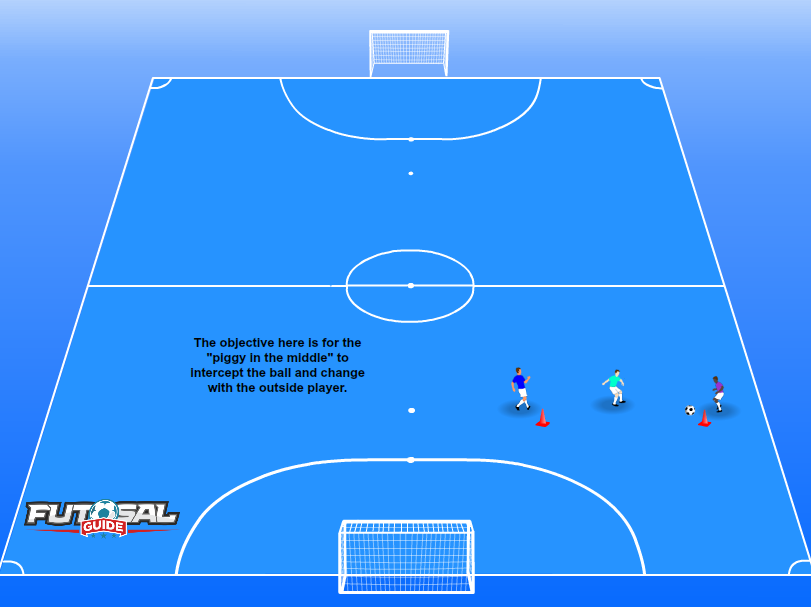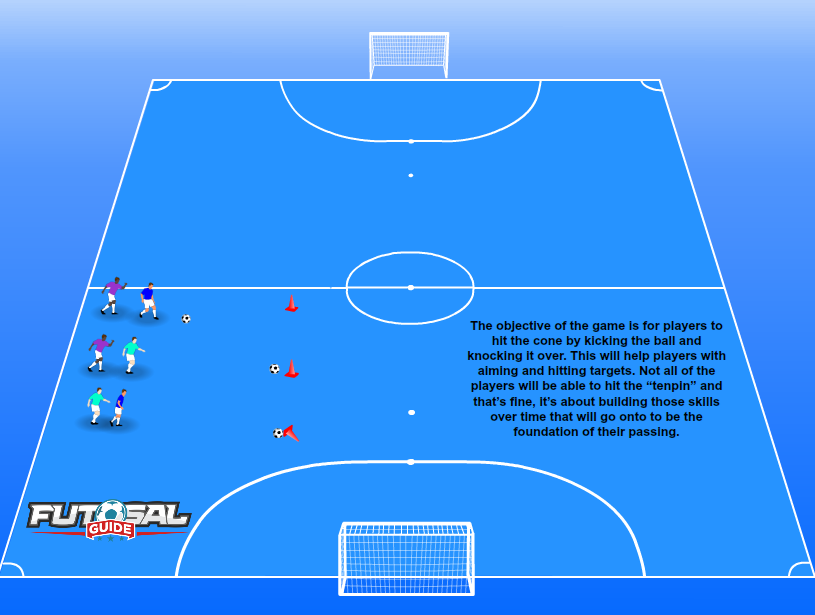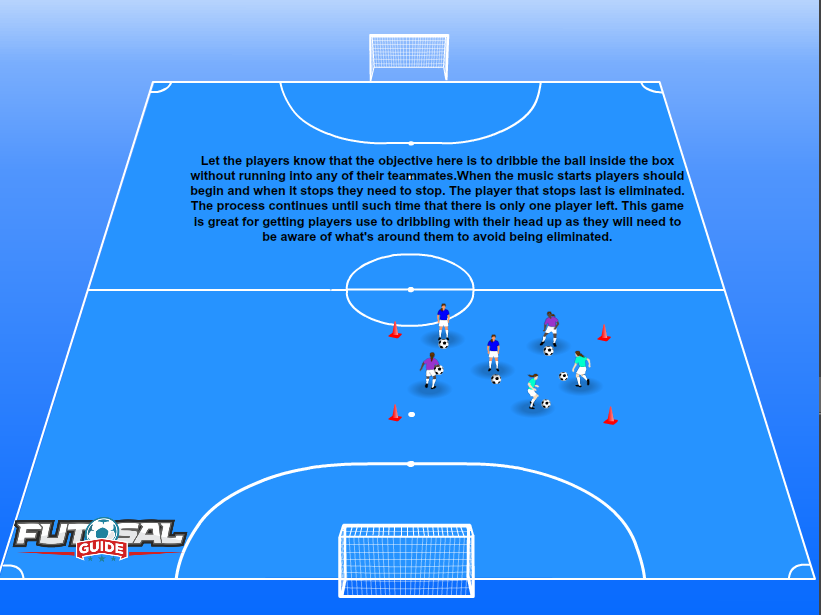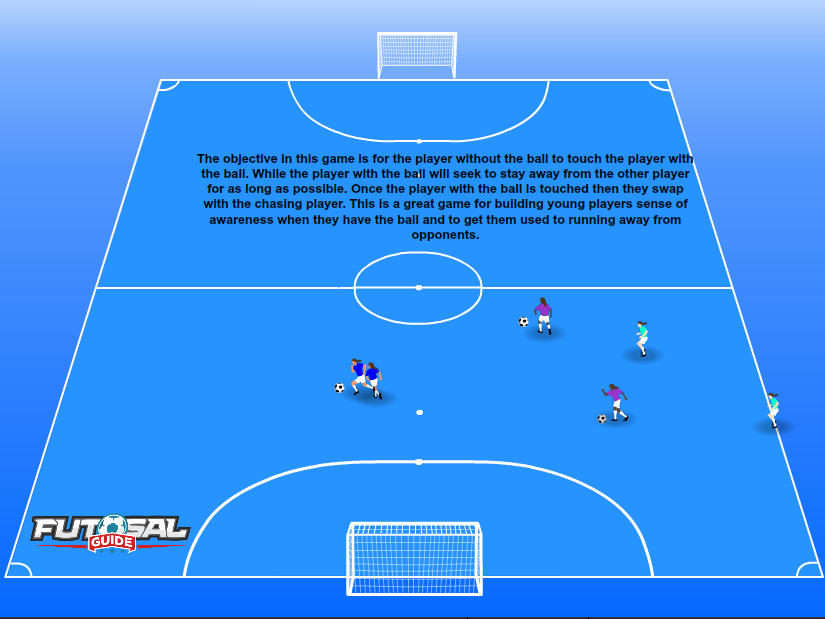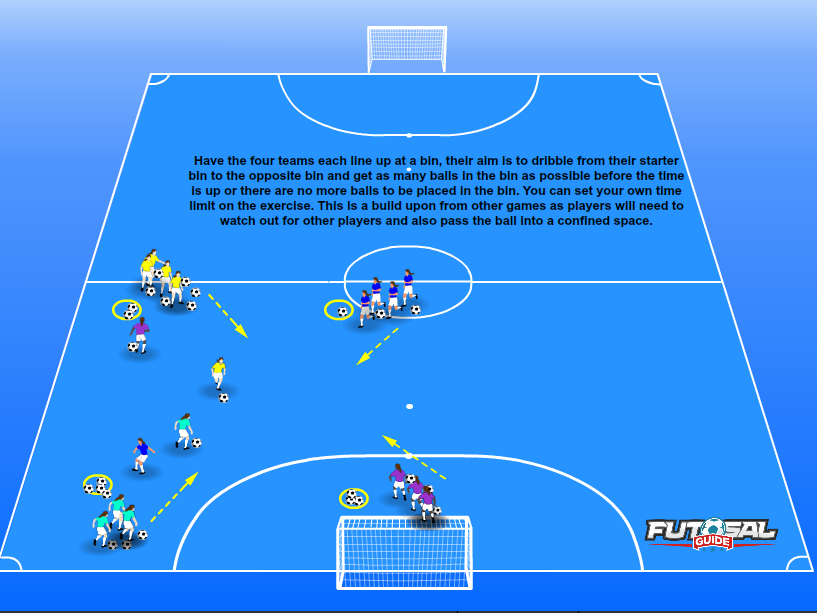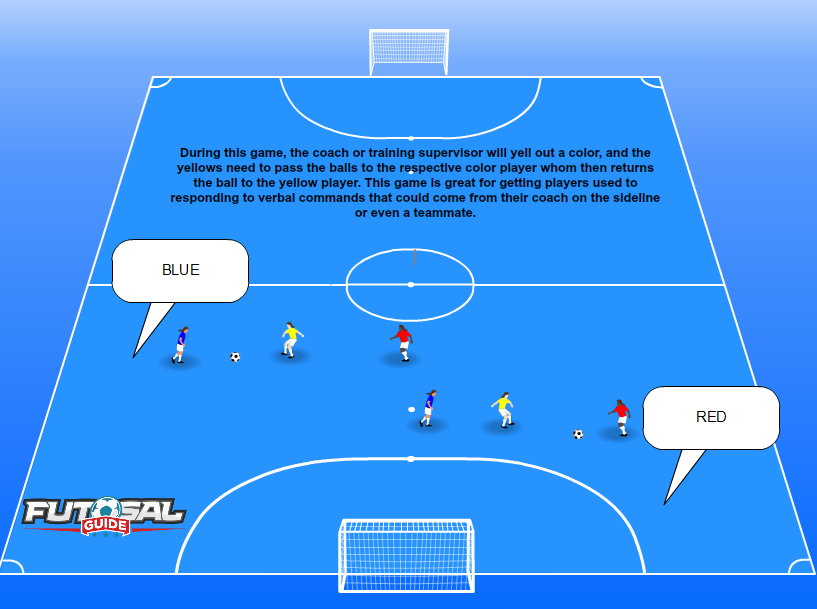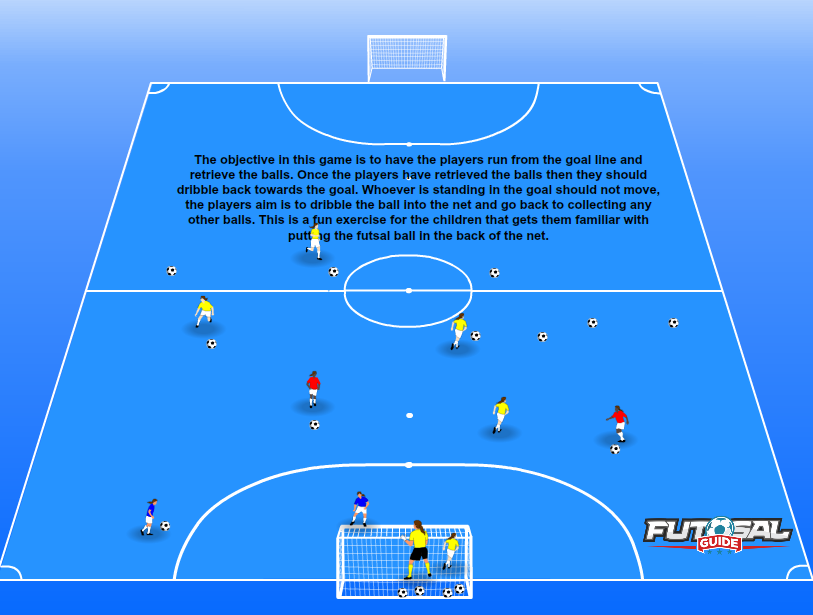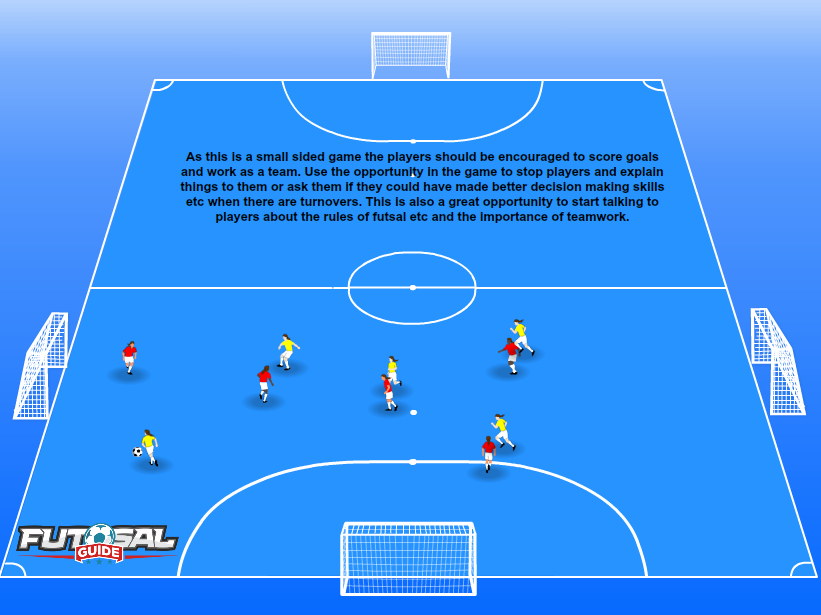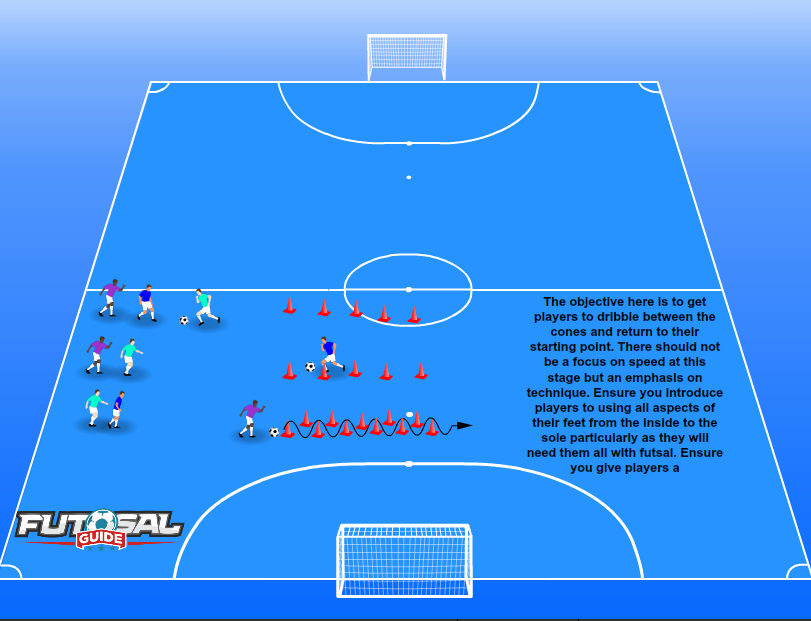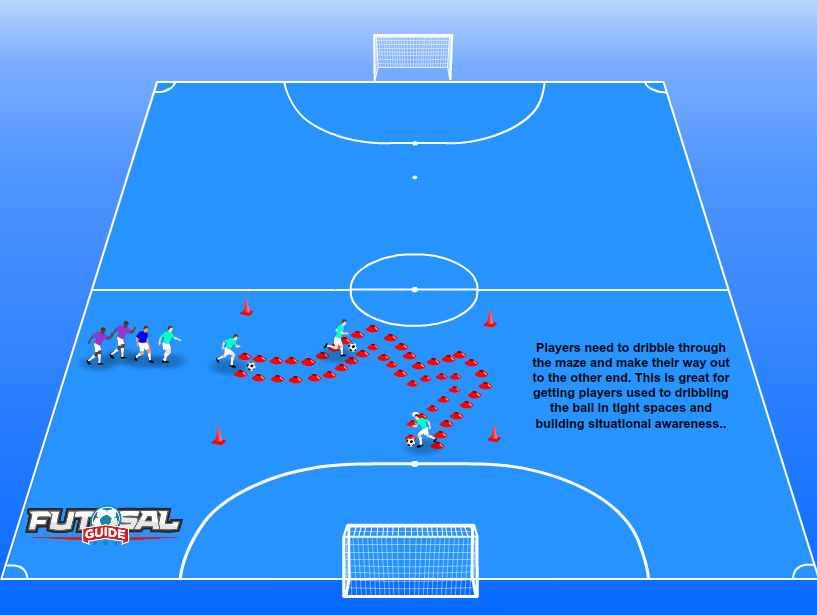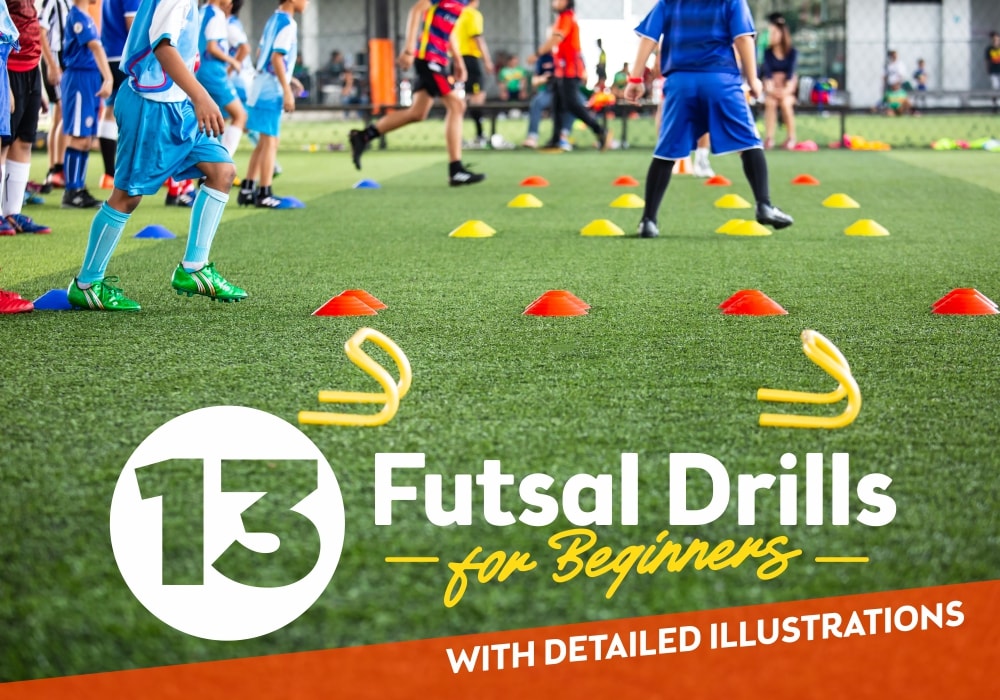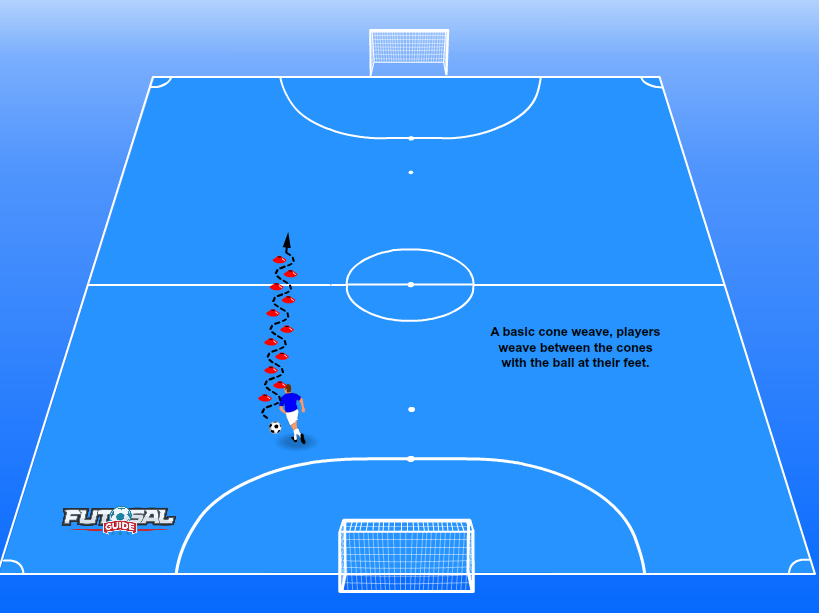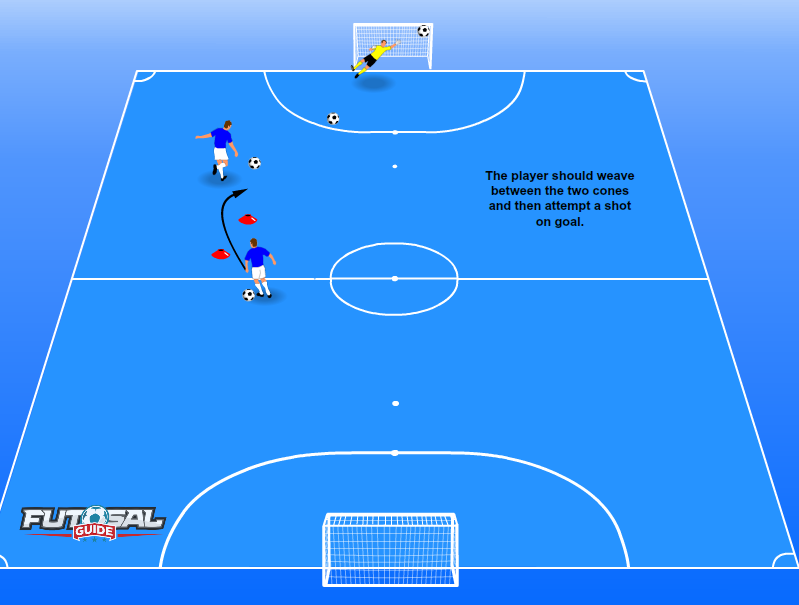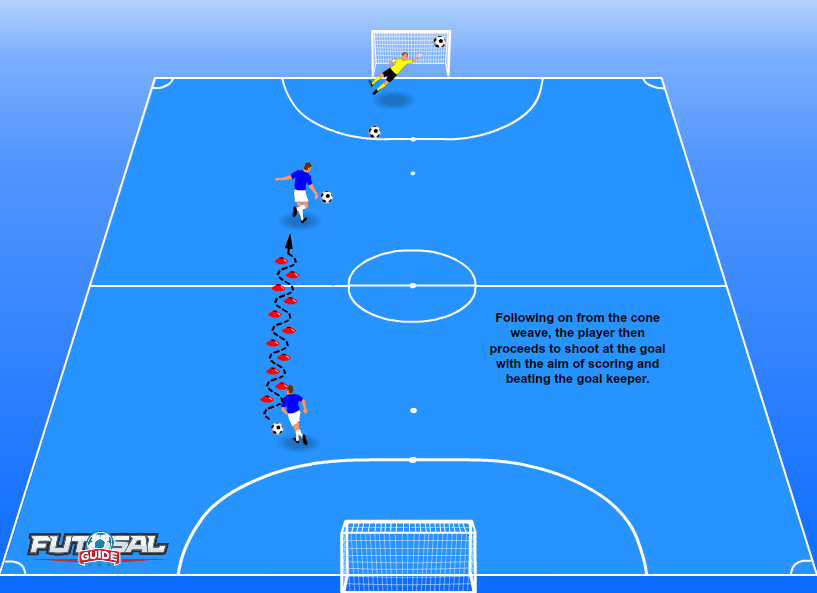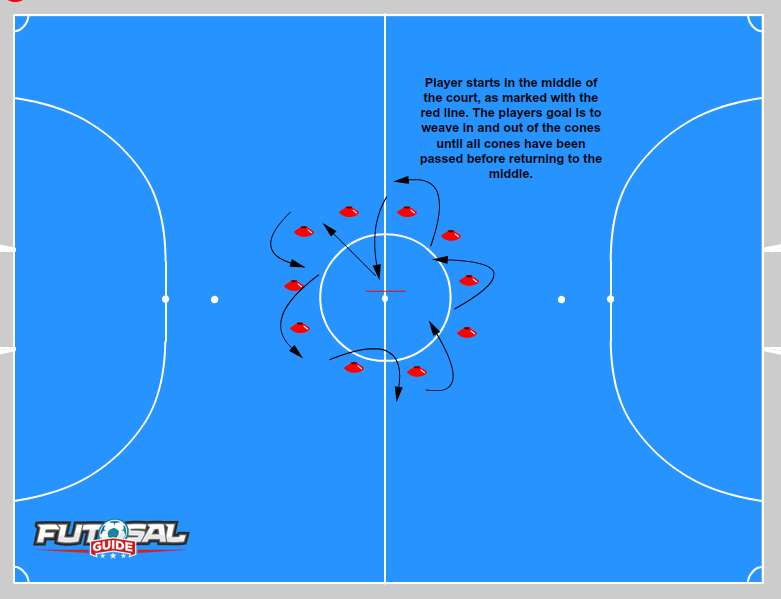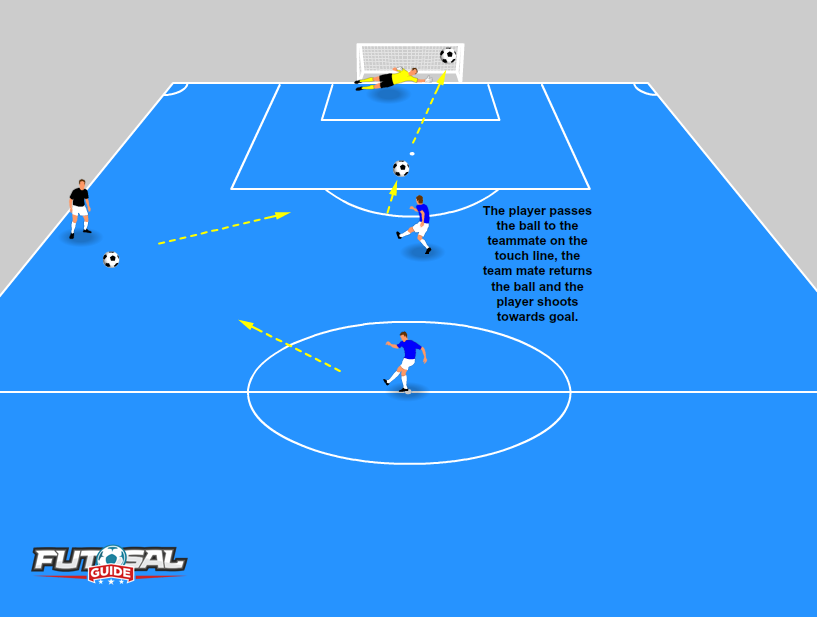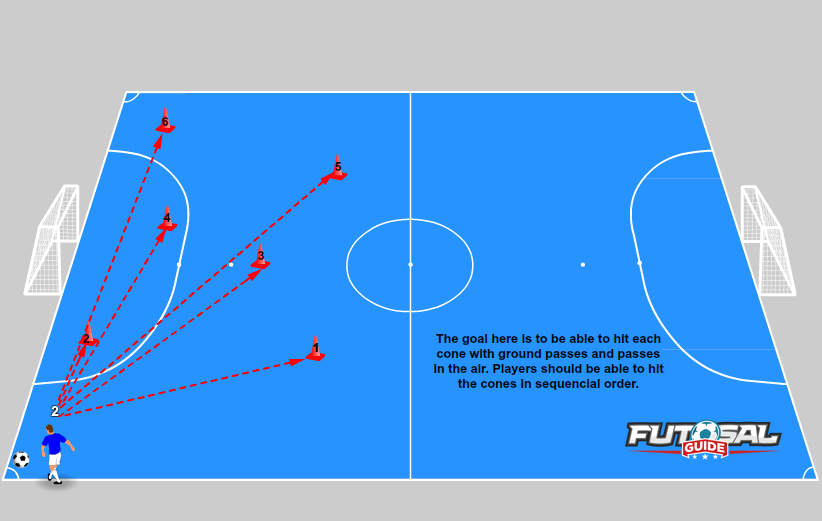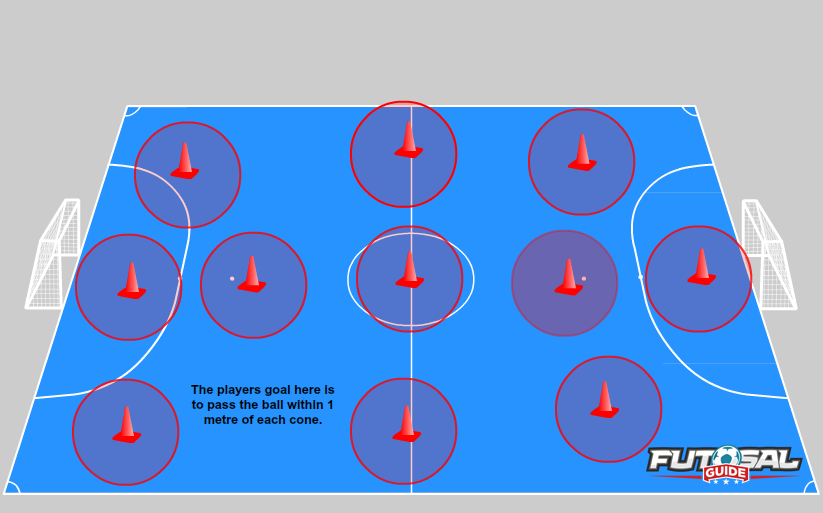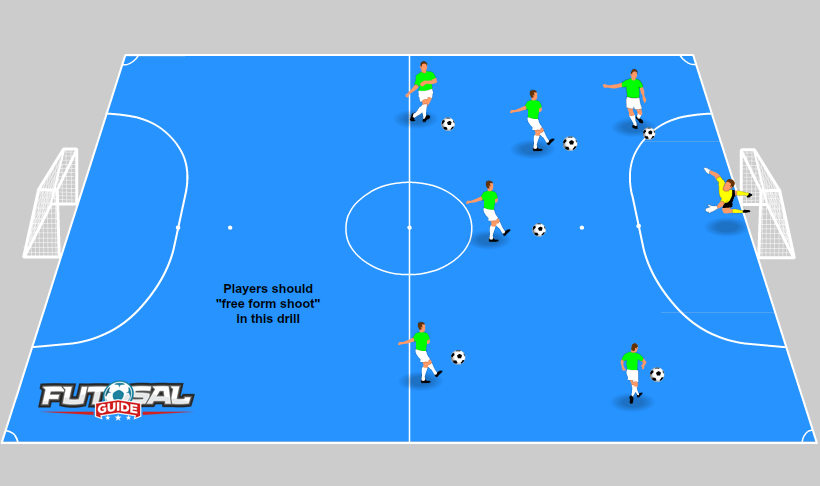Getting the body and mind focused before a game or training session is very important but it can also be one of those things that can slip to the back burner and left stale with the same routines used time and time again. We’ve put together a list of 20 warm-up drills that you can use to mix it up at training and before games.
The following drills can be used at all levels and are focused on warming the body up while also getting plenty of ball work in.
1.Aerobic Warm-Up
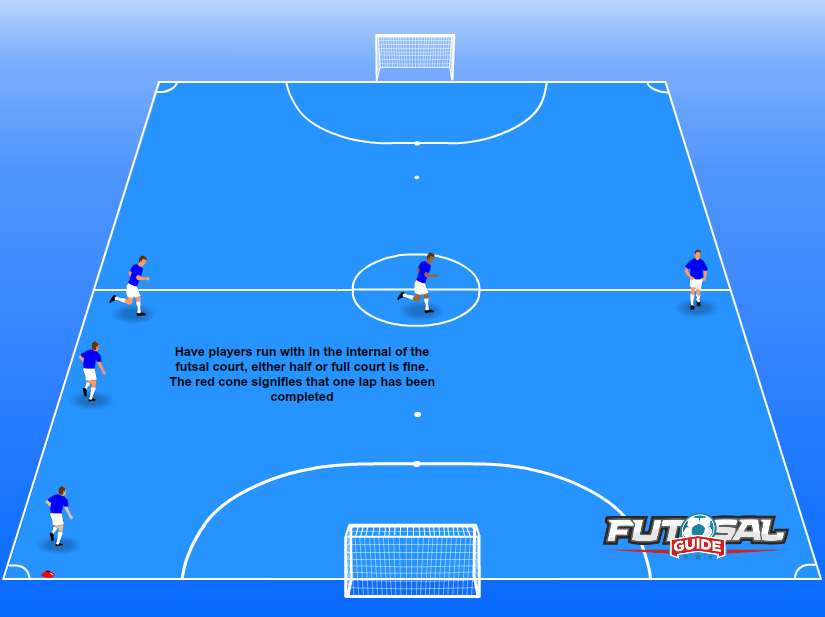
The aim of the aerobic warm-up is to get players bodies to start warming up from their “cold muscle state”. The goal here isn’t to try and get players operating at maximum capacity but to get their bodies ready for more strenuous exertion.
Getting players to jog around the internal or external perimeter of the futsal court or even within one half if the opposition is using the other half is a great way to get the blood flowing.
We recommend a minimum of 10 minutes, a light jog may not seem like much but when done without stopping the players’ bodies will be ready for more exercises with an elevated heart rate.
A light jog before more strenuous exercises is also a great way for players to see if they are suffering any niggling injuries or if they are fit for the match ahead.
You can read our comprehensive guide to warm-up exercises for the body here.
2. Man In The Middle
Get players to form a circle, if you have enough players form two. The object of this warm-up exercise is for the player that’s located in the middle to intercept passes between the players on the circle perimeter.
A basic exercise but it is one that requires players to think before they make a pass and for the players located within the circle, they must focus on reading players body language and ball interception.
A good exercise for switching players mental focus as well as their physical, an exercise that’s used at all levels from junior to professional in both outdoor soccer and futsal.
3. 2v2 Attackers vs Defender and Goalkeeper
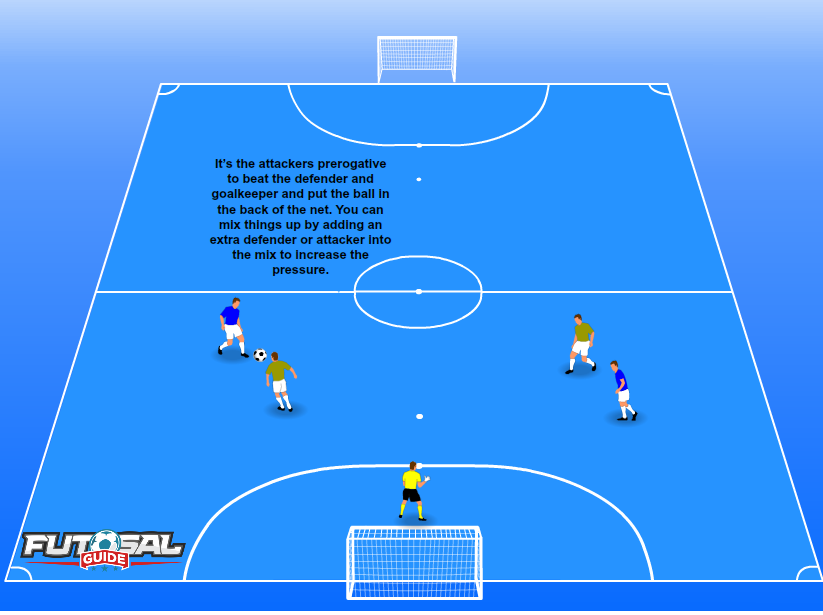
This one will require five players in total, have a player set up at the goal line with the futsal ball, that player will pass the ball to the attackers who are situated on the halfway line. You’ll need a defender and goalkeeper to act as the defenders.
It’s the attackers prerogative to beat the defender and goalkeeper and put the ball in the back of the net. You can mix things up by adding an extra defender or attacker into the mix to increase the pressure.
You may also wish to add extra restrictions such as:
- No more than six touches
- Time limit i.e. 60 seconds
- Not letting the defender touch the ball
Once the players have been through have them switch out to ensure all players play the roles of attackers and defenders, as futsal is such a fluid game all players need to be comfortable with attacking and defending and if needed goalkeeper duties from time to time.
4.Cross Passing/Diagonal Runs
Divide your team into two groups, have the two groups split again and face each other, approximately 5-7 meters apart in both directions. Call the groups 1 & 2 for argument’s sake.
The objective here is for the groups to face each other and pass the ball to their teammates but then run diagonally across and join the other group.
i.e. Player from group 1 passes to another player from group 1 and then runs diagonally across to join group 2. As the passes start players will need to be aware of the opposition player coming in the other direction.
5.Attacker Vs Goalkeeper
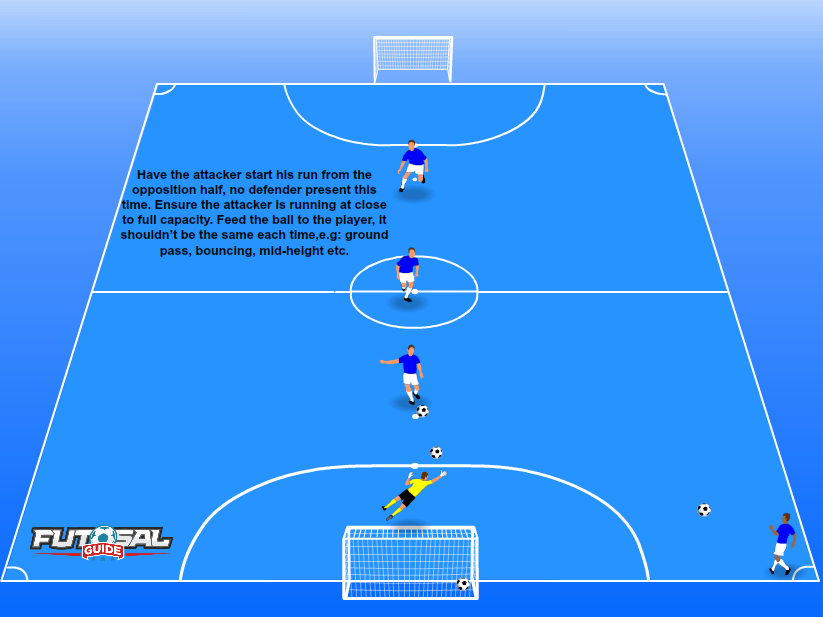
Have the attacker start his run from the opposition half, no defender present this time. Ensure the attacker is running at close to full capacity. Feed the ball to the player, it shouldn’t be the same each time,e.g: ground pass, bouncing, mid-height etc.
The aim here is for the player to try and control the ball mid-stride and then beat the goalkeeper. Players should get an opportunity to try the drill a few times with each time requiring a different type of finish such as right foot, left foot, header, volley and so on.
You can add extra constraints such as cones or a defender that jockeys only.
6. Two Balls Two Feet
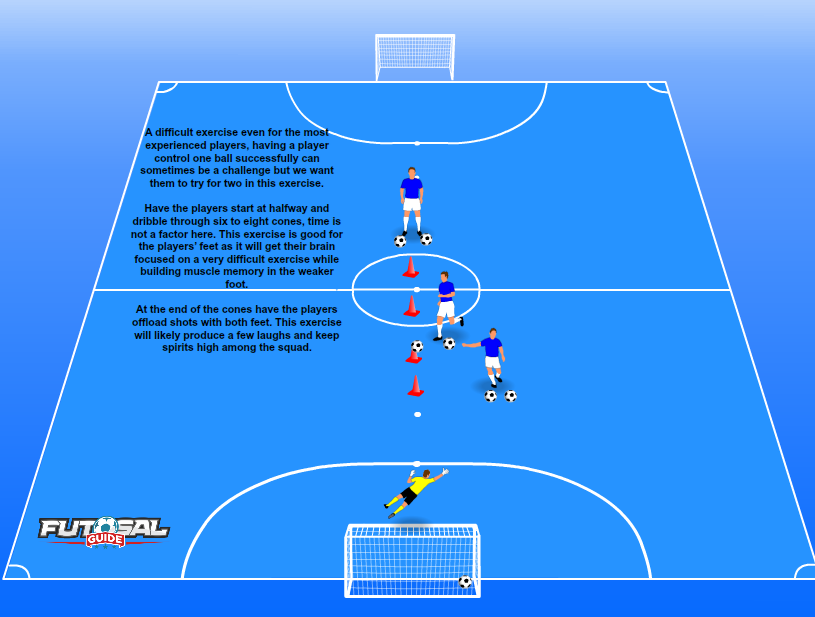
A difficult exercise even for the most experienced players, having a player control one ball successfully can sometimes be a challenge but we want them to try for two in this exercise.
Have the players start at halfway and dribble through six to eight cones, time is not a factor here. This exercise is good for the players’ feet as it will get their brain focused on a very difficult exercise while building muscle memory in the weaker foot.
At the end of the cones have the players offload shots with both feet. This exercise will likely produce a few laughs and keep spirits high among the squad.
7.Piggy In The Middle

A basic warm-up, but one that is good for all levels. Have players form groups of three with one defender and two attackers.
The goal in this exercise is for the attacking players to pass to each other without the defender touching or intercepting the ball. If the defender intercepts or touches the ball then the last attacker to touch the ball must swap places with the defender.
Have players run through this for at least five minutes.
8. Keepy Up

Have players form groups of two to four players should suffice depending on squad numbers. The goal here is basic but testing. Players should try and keep the ball off the ground for as long as possible.
This is great for engaging all parts of the players’ arsenal being knees, feet, head, and so on. If you are working with an advanced squad make them play the ball higher in the air for their teammates to make it more challenging.
You can add extra restrictions such as no feet, headers only or weak foot only etc. Adding extra restrictions will ensure players are as actively engaged mentally as they are physically.
9.Goalkeeper Blitz
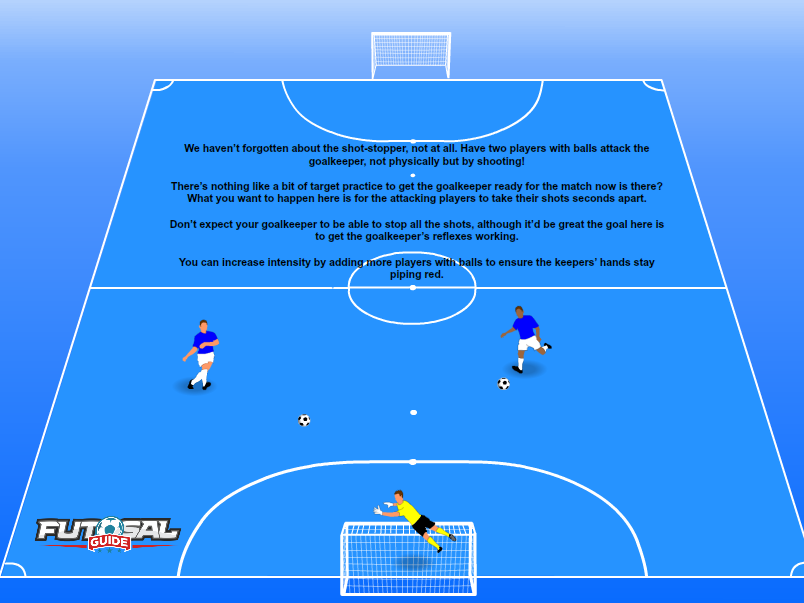
We haven’t forgotten about the shot-stopper, not at all. Have two players with balls attack the goalkeeper, not physically but by shooting!
There’s nothing like a bit of target practice to get the goalkeeper ready for the match now is there? What you want to happen here is for the attacking players to take their shots seconds apart.
Don’t expect your goalkeeper to be able to stop all the shots, although it’d be great the goal here is to get the goalkeeper’s reflexes working.
You can increase intensity by adding more players with balls to ensure the keepers’ hands stay piping red.
10. Quasi Handball
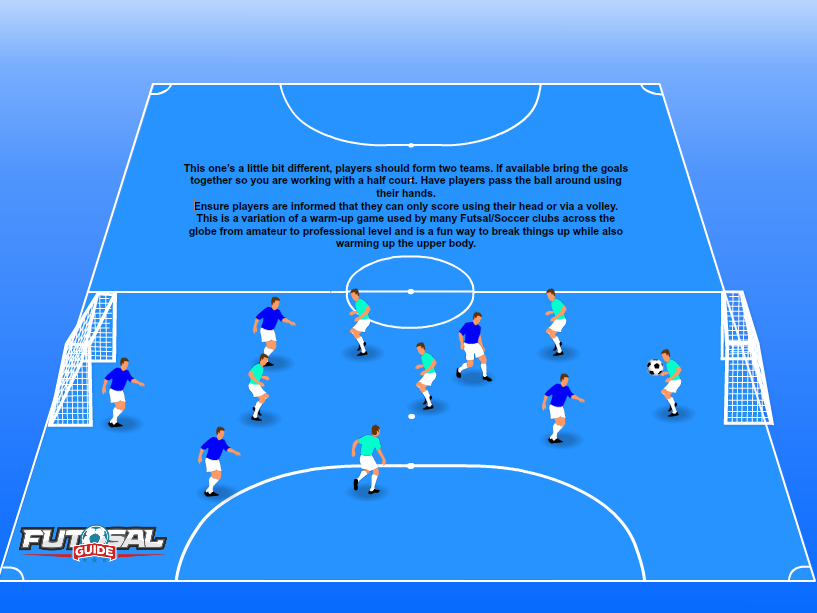
This one’s a little bit different, players should form two teams. If available bring the goals together so you are working with a half court. Have players pass the ball around using their hands.
Ensure players are informed that they can only score using their head or via a volley.
This is a variation of a warm-up game used by many Futsal/Soccer clubs across the globe from amateur to professional level and is a fun way to break things up while also warming up the upper body.
11. Futsal Tennis
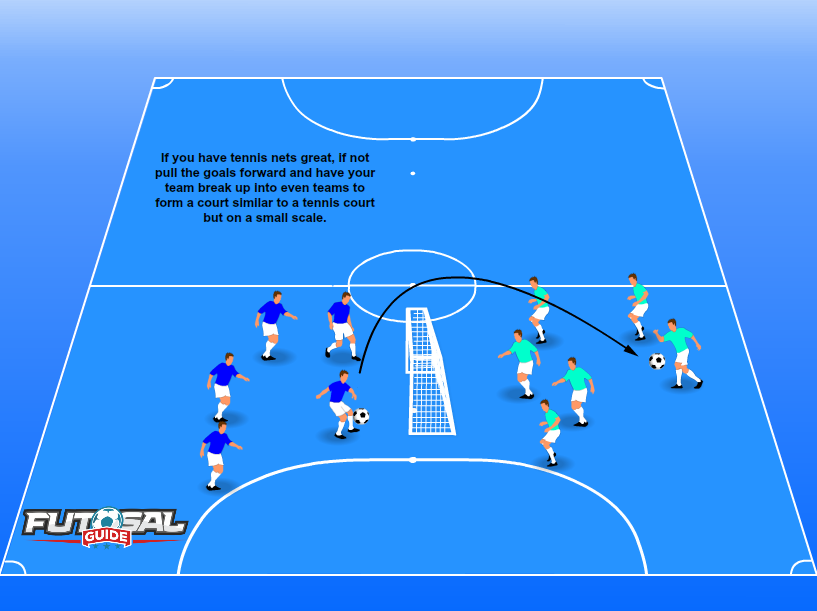
If you have tennis nets great, if not pull the goals forward and have your team break up into even teams to form a court similar to a tennis court but on a small scale.
You can add multiple rules to this one such as:
- No bounce
- Allowing the ball to bounce once
- Headers only
- Weak foot only
- One bounce allowed, and so on.
I’ve found this to be another warm-up drill to help players bodies and minds ease into the impending game. Another great one for team morale.
12. Futsal Catch
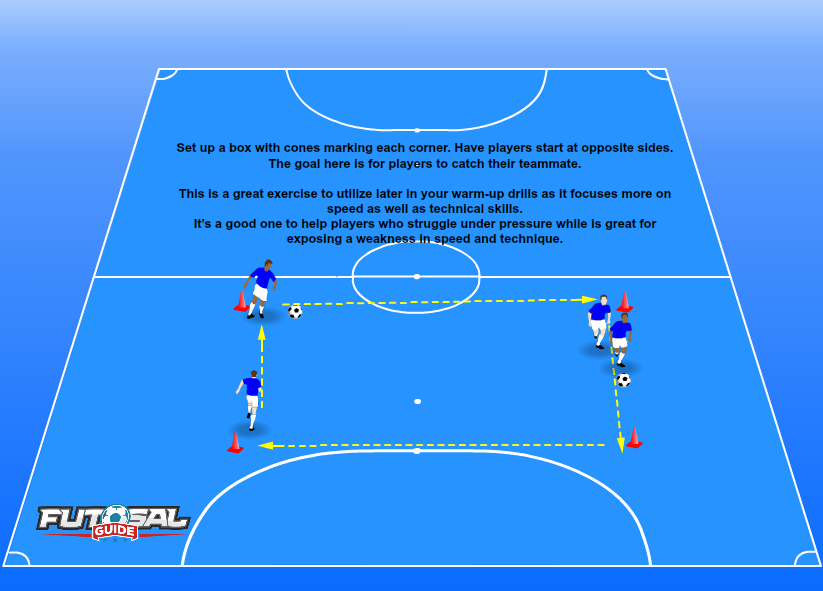
Set up a box with cones marking each corner. Have players start at opposite sides. The goal here is for players to catch their teammate.
This is a great exercise to utilize later in your warm-up drills as it focuses more on speed as well as technical skills.
It’s a good one to help players who struggle under pressure while is great for exposing a weakness in speed and technique.
13.Suicide Sprints
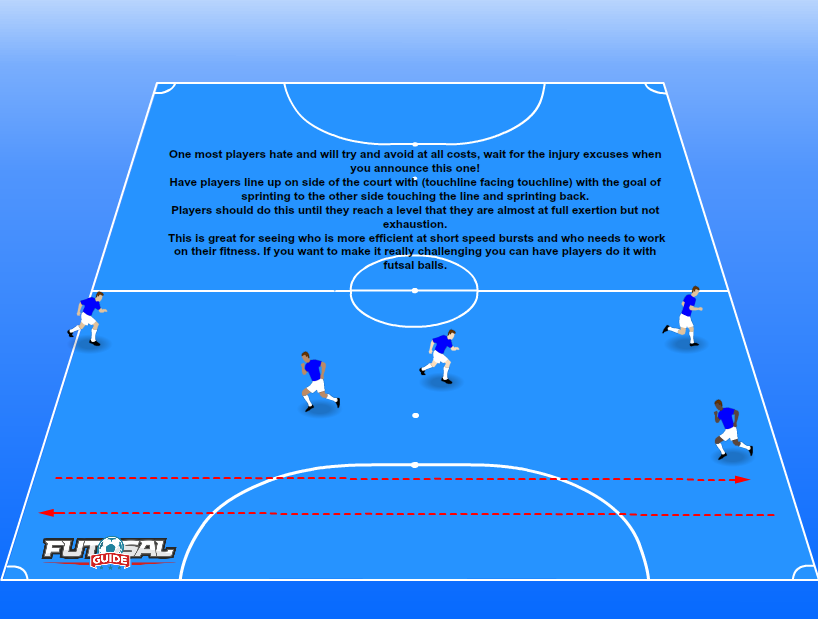
One most players hate and will try and avoid at all costs, wait for the injury excuses when you announce this one!
Have players line up on side of the court with (touchline facing touchline) with the goal of sprinting to the other side touching the line and sprinting back.
Players should do this until they reach a level that they are almost at full exertion but not exhaustion.
This is great for seeing who is more efficient at short speed bursts and who needs to work on their fitness. If you want to make it really challenging you can have players do it with futsal balls.
14. 1,2, Shoot!
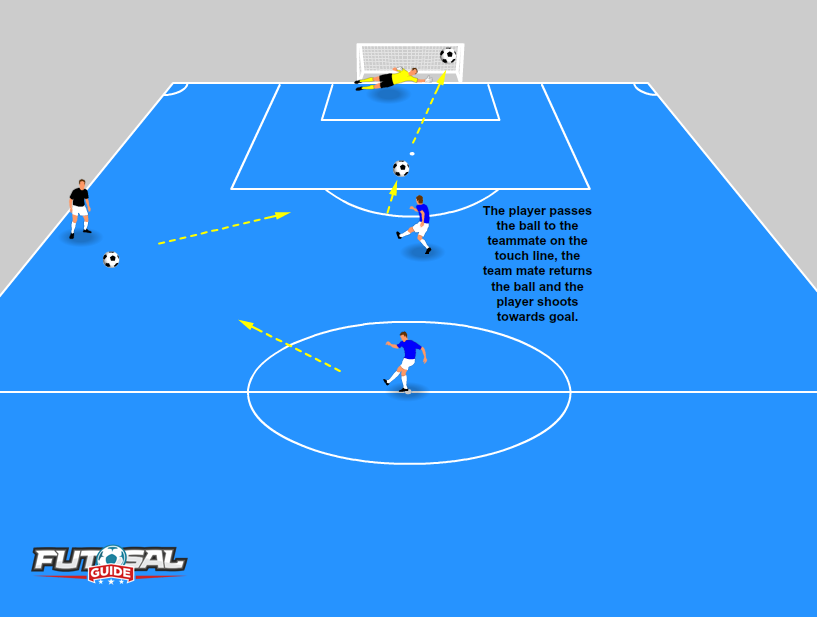
A classic and applied to both soccer and futsal, place one player in the middle of the attacking half towards the touchline and one player on the halfway line.
The player on the halfway line should pass the ball to the player on the touchline who will then play it back to the attacker.
The attacker should then receive the ball and shoot, each player should have a few run-throughs on both feet.
15. Practice Penalties
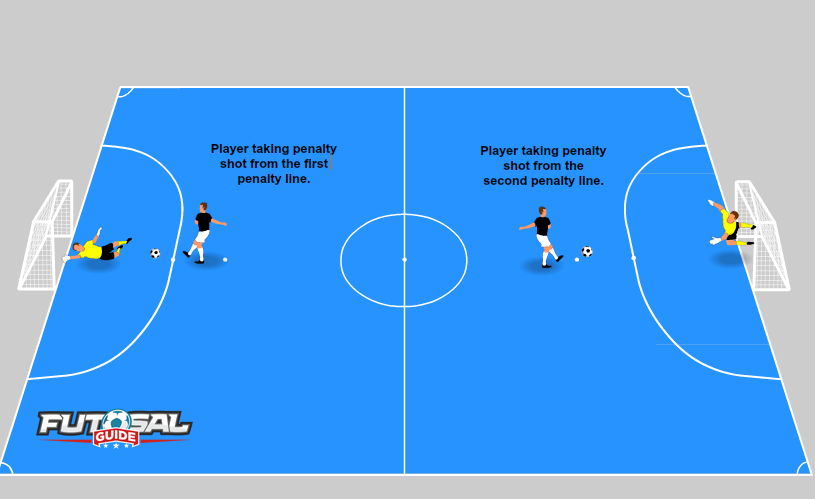
As there is a high chance of penalties in futsal it makes sense to get a few practice ones in and sort out a line up of it’s the type of game where one might be required.
Not only will it allow players to get a little more comfortable with the task but it also gives goalkeepers the opportunity to get some saving practice in and keep any potential butterflies away.
Don’t forget there are two penalty spots in futsal, you’d be wise to ensure that your players get practice from both spots.
16. 1 vs The Rest
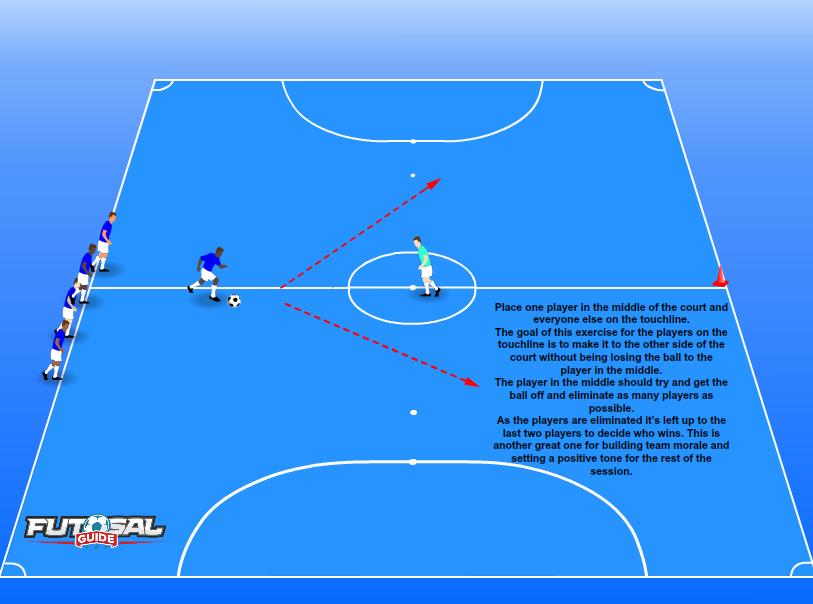
Place one player in the middle of the court and everyone else on the touchline.
The goal of this exercise for the players on the touchline is to make it to the other side of the court without being losing the ball to the player in the middle.
The player in the middle should try and get the ball off and eliminate as many players as possible.
As the players are eliminated it’s left up to the last two players to decide who wins. This is another great one for building team morale and setting a positive tone for the rest of the session.
17.Squats And Planks
Warming up isn’t all about running around with a ball and firing of worldies at the poor goalkeeper. Consider running the squad through some light squat work and planking drills.
Have players squat without weights for 5 x 30-second reps holding at the bottom. It may not sound like much but it will help engage the quads and core. It’s likely that if there are any niggles in that region players will find out now.
Get the players to plank with a goal of two minutes, planking will engage their core and back primarily. All good futsal players have strong cores so they can’t be easily jostled off the ball!
18. Agility Dribbles
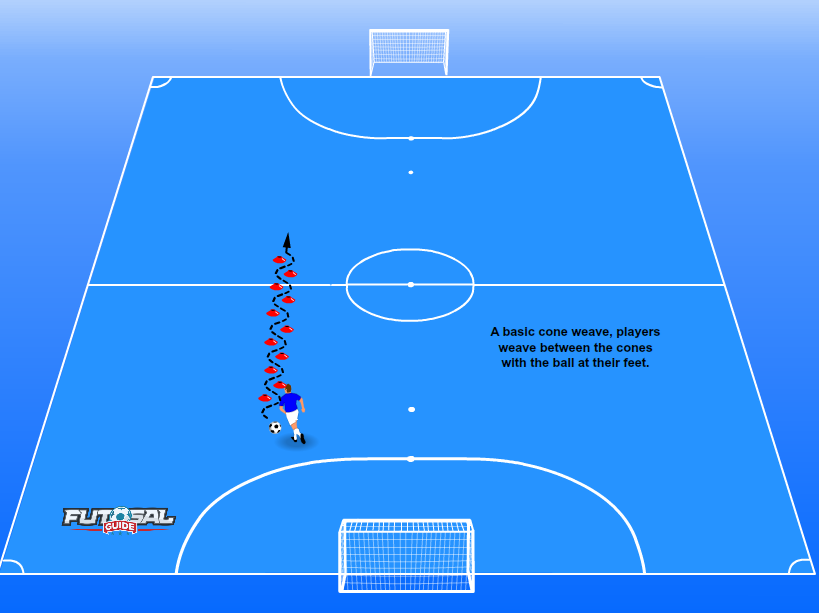
A very basic warm-up exercise, have players dribble through 8-12 cones.
Once players have dribbled through the cones have them pass to a player who will then do the same.
Although basic in nature this will help players warm up while using the ball without having to worry about shooting or a defender closing them down.
19. You Can’t Catch Me
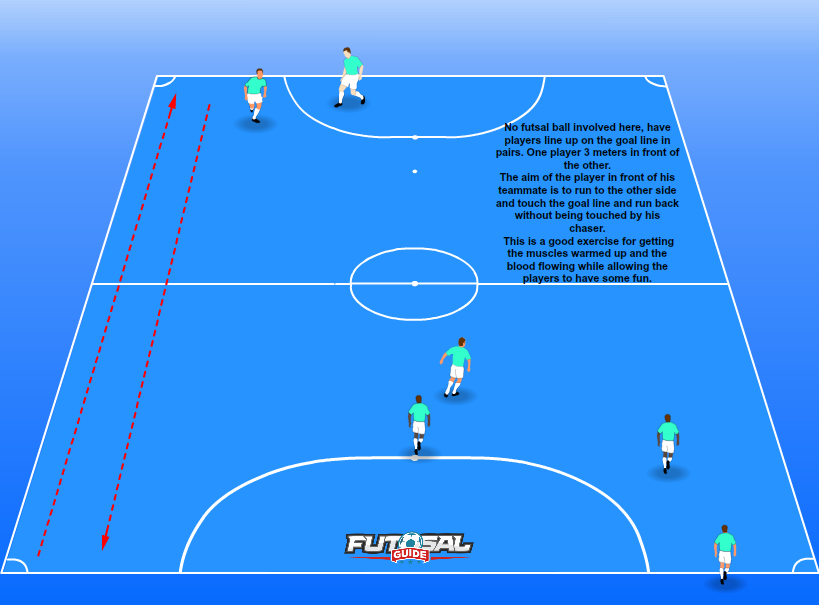
No futsal ball involved here, have players line up on the goal line in pairs. One player 3 meters in front of the other.
The aim of the player in front of his teammate is to run to the other side and touch the goal line and run back without being touched by his chaser.
This is a good exercise for getting the muscles warmed up and the blood flowing while allowing the players to have some fun.
20. Tactics Review
The mind needs to warmed up as much as the body, the go hand in hand and one is out of line the other will normally be as well.
Whether it’s training or pre-game it’s important to inform players of what you expect to occur in order to help them visualize it. You can do this a number of ways such as:
- Using a whiteboard
- Watching training videos
- Using a Tactics Board
Take this time to ensure players understand what’s required of them, even at an amateur level taking the time to field questions, develop new ideas and resolve issues in a learning environment is just as important as actual physical training drills.
While not exhaustive the above-listed drills and games can be used on almost all levels of players from amateur to professional. You’ll be able to get players in the right frame both mentally and physically for games and training sessions.

































































